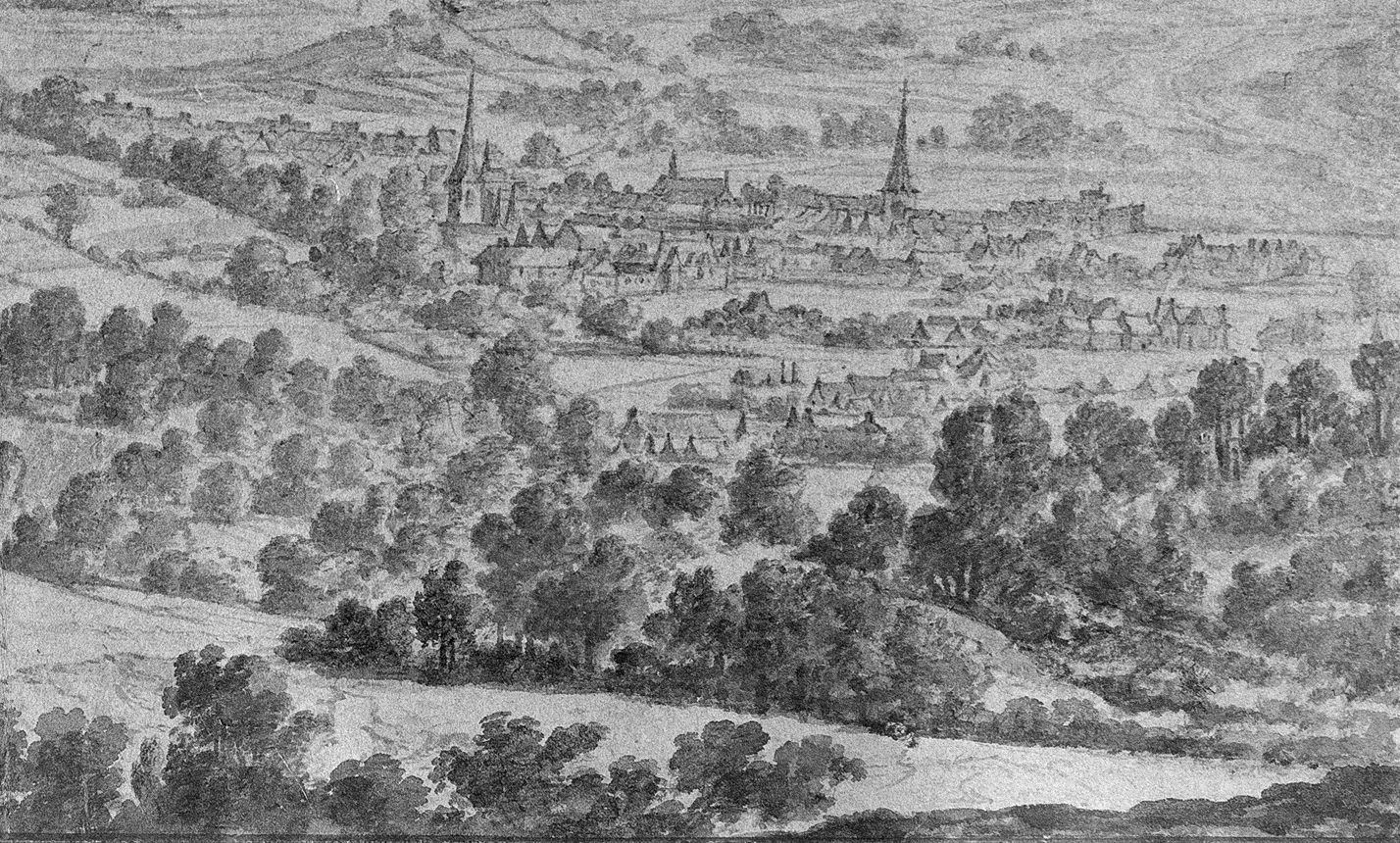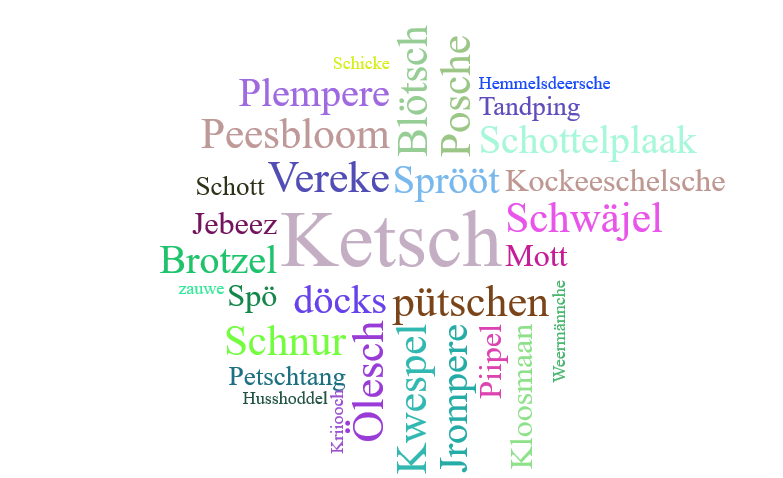The dialects of East Belgium are dialects of the Brabant-Lower Franconian dialect area and the Rhineland. They are languages that emerged as early as the first millennium and continued to develop. The 16th century is of particular importance for the history of language as this is when the medieval written languages based on dialects were abandoned. Standard languages were now increasingly used in written documents – for East Belgium, this meant German, French or Dutch (or Limburgish and Brabantish). A similar process took place everywhere between the Atlantic, the North Sea, and the Alps.
In the villages of the Belgian Eifel, the number of dialect speakers is still relatively high. A significant proportion of parents in the area continue to speak dialect with their children. In the large towns and in St. Vith, on the other hand, the number of dialect speakers is significantly lower. In the north of East Belgium, young people hardly speak dialect any more. All this illustrates that the loss of dialect is also progressing in East Belgium. Reasons for this include the influx of people who do not come from East Belgium, greater mobility within East Belgium and marriages between partners, of whom one does not speak a dialect (anymore). But above all, the social dimension of the dialect is noticeably diminishing.
However, the decline is much slower than predicted in the 1980s. This is due to the reputation of dialects: until the 1980s, dialects were not only considered the language of the uneducated, but were also scapegoated, especially by Germanists, for what they perceived as a failure to use standard German in East Belgium. However, the reasons for the ‘incorrect’ use of German were manifold:
- Many non-local teachers with often inadequate knowledge of German (from the province of Luxembourg, among others) made up a significant part of the educational staff between 1920 and 1970. This led to a delayed integration of this minority into the German language. Acquisition of standard German was also prevented by the frequent use of French in administration and offices. Other promoters of standard German, such as the press or the church, were unable to make up for these deficits, or only insufficiently.
- Until the 1990s, a smaller proportion of those starting school in the Belgian Eifel had to first learn High German at school at the age of six, as they had previously only spoken dialect.
- Of course, the adoption of Low German grammar and some words into the standard language leads to linguistic inaccuracies. However, these should not be greater in East Belgium than in other regions with a dialect background.
- Since the 1990s, speaking in dialect has gained new popularity, especially in the Belgian Eifel, which continues to slow down the loss of dialect. Dialect is seen, especially in the Belgian Eifel, as a unifying element that reflects an inner strength. What this means is exemplified by Flanders: The Flemish television station, VRT, uses Flemish-tinged standard Dutch in its series to promote a Flemish identity.
However, the use of dialect can also lead to the social exclusion of those who do not speak dialect. They then experience that a dialect – in contrast to a high-level language – is difficult to learn.
In East Belgium, dialect is usually referred to as ‘Platt’ (both in standard German and in the dialect ‘Plattdütsch’) and ‘Mundart’ (in high German). The word ‘Platt’ originally meant ‘understandable’, or ‘unvarnished’.
In East Belgium, three dialect areas can be distinguished:
- The Southern Low Franconian dialect space is the area between the Ürdingen line (ik/ich) and the Benrath line (maken/machen).
- The Ripuarian dialect area is between the Benrath line (maken/machen) and the Eifel line (dorp/dorf).
- The Mosel-Frankish language area lies between the Eifel line (dorp/dorf) and the Hunsrück line (dat/das).
The dialect of the village of Recht (Reeter Platt) occupies a special position. Here, the francophone influence is particularly strong, as Recht’s geographical location made it easier to communicate with its Walloon neighbours in Vielsalm than with the German speakers, which also rubbed off on the language. Hence, in Rechter Platt we find terms such as defendöre (from défendre, to defend), paraplie (from parapluie, umbrella) and schäselong (from chaise longue, deck chair, or sofa), which are also common in other dialects in the Saarland, or schavoi (from chou de Savoie, savoy cabbage).
Within the East Belgian dialect spaces, there are therefore again a large number of local dialects. However, their differences have noticeably decreased since the 1970s due to the significantly greater mobility of young people. Locals still notice these often very subtle differences. Dialect geography research documents them on language maps.
An important feature of the East Belgian dialect spaces are the influences of the French and especially the Walloon language through loan words (‘makei’ for curd, for example). Walloon in Malmedy Wallonia also contains numerous loan words from German and German dialects (‘Brötchän’ for bread roll, or bun, for example).
Further reading
Elmar Neuß, „Der lange Weg zur deutschen Schrift- und Kultursprache. Von Volkssprachen, Schreibsprachen und Sprachwerdung in Sprachkontaktzonen“, in: Carlo Lejeune, David Engels (ed.), Grenzerfahrungen. Eine Geschichte der Deutschsprachigen Gemeinschaft Belgiens, vol. 1: Villen, Dörfer, Burgen (Altertum und Mittelalter), Eupen 2013, pp. 180-197.
Elmar Neuß, „Wie die modernen Schriftsprachen die älteren Schreibsprachen langsam verdrängten. Fragen zu einem bisher kaum beachteten Forschungsfeld an den Sprachgrenzen“, in: Carlo Lejeune (ed.), Grenzerfahrungen. Eine Geschichte der Deutschsprachigen Gemeinschaft Belgiens, vol. 2: Tuche, Töpfe, Theresianischer Kataster (1500-1794), Eupen 2015, pp. 224-237.
Robert Möller, „Im Zeitalter der Nationalsprachen. Sprachentwicklung im politischen und sprachlichen Grenzraum zwischen Maas und Rhein“, in: Carlo Lejeune (ed.), Grenzerfahrungen. Eine Geschichte der Deutschsprachigen Gemeinschaft Belgiens, vol. 3: Code civil, beschleunigte Moderne und Dynamiken des Beharrens (1794-1919), Eupen 2016, pp. 230-251.
Robert Möller, „Die Minderheitensprache als Politikum. Schutz oder Verdrängung des Deutschen in den cantons rédimés“, in: Carlo Lejeune, Christoph Brüll, Peter Quadflieg (Hg.), Grenzerfahrungen. Eine Geschichte der Deutschsprachigen Gemeinschaft Belgiens, vol. 4: Staatenwechsel, Identitätskonflikte, Kriegserfahrungen (1919-1945), Eupen 2016, pp. 348-363.
Dorf Recht: Über Ursprung und Entstehung des Rechter Platt (Mit Wörterbuch zum Rechter Platt), accessed March 2023.

